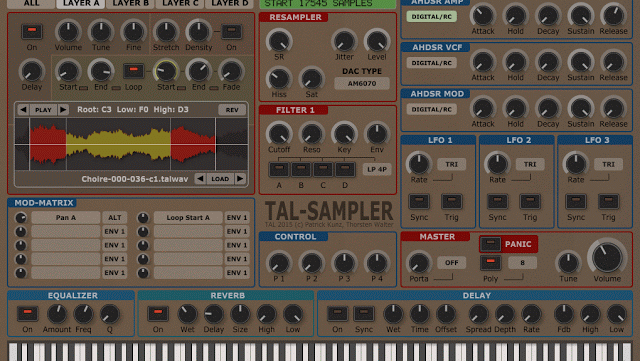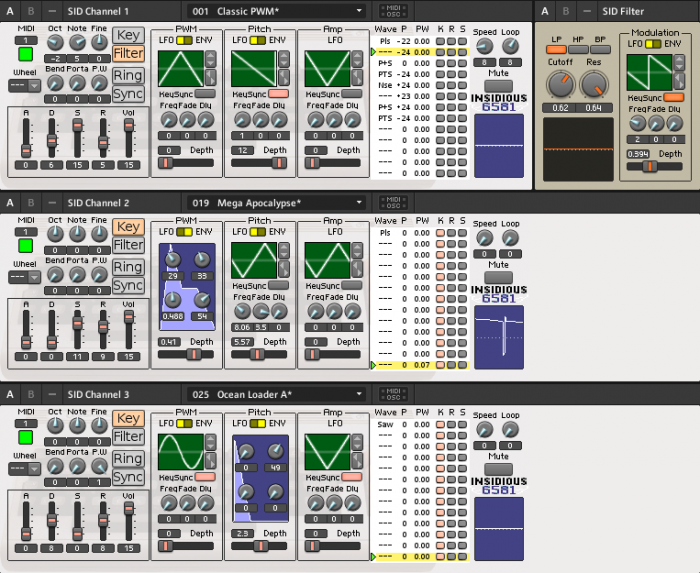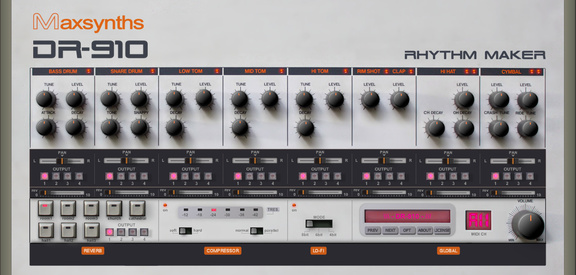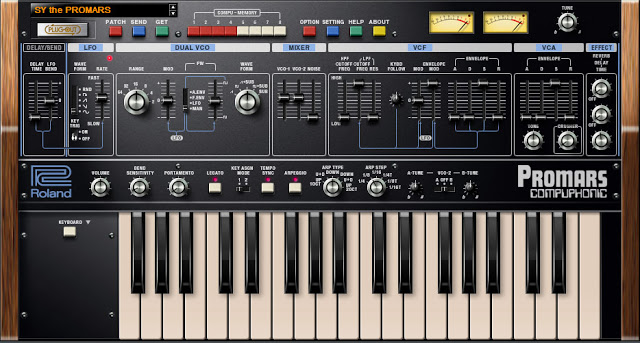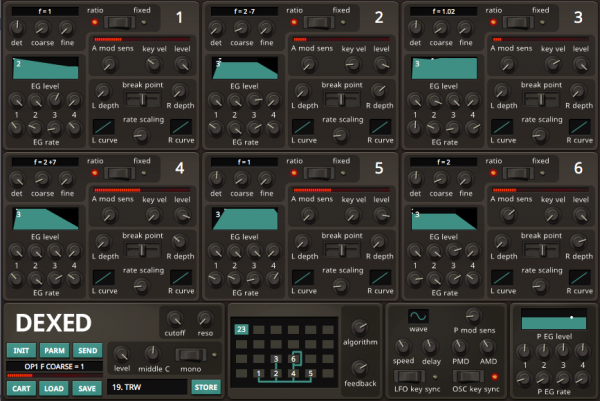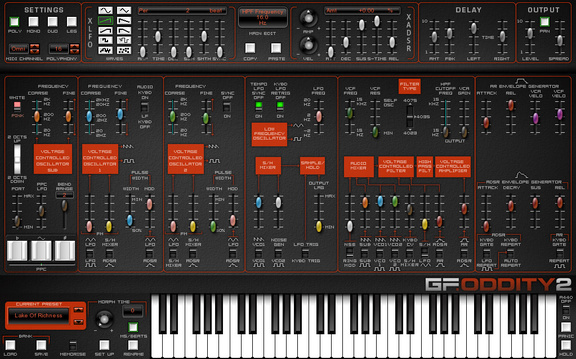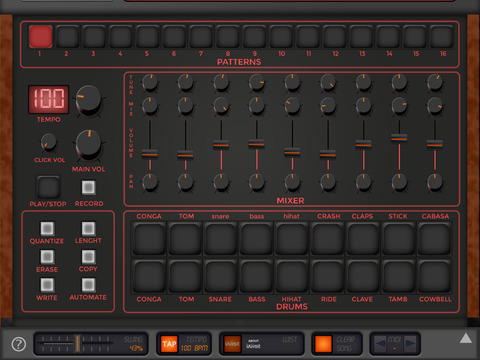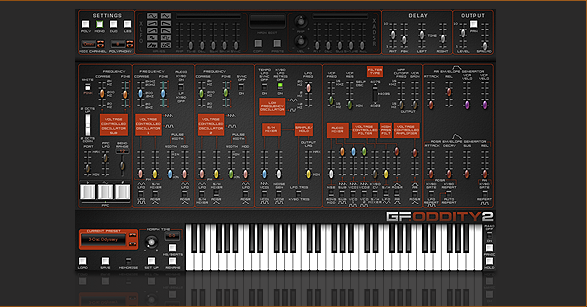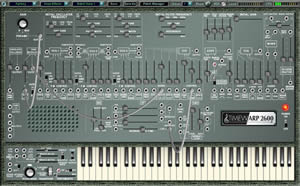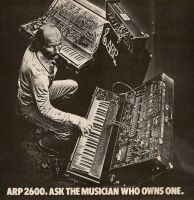New sampler from TAL emulating the vintage EMU II
TAL-Sampler is not just a sample player. It’s a full featured analog modeled synthesizer with a sampler engine as sound source, including a powerful modulation matrix and a high quality self-oscillating 24/12/6 dB low pass filter.
Don’t expect a 40GB piano sample library with samples for every velocity or something similar. The idea is to bring back the fun sampling was in the good old times with small samples, fast loading times and an intuitive work-flow to create your own sample presets without getting lost in the settings.
It’s possible to choose between different digital analog converters (DAC’s) to get the vintage sound of different hardware samplers inside your DAW. We don’t make cheap bit crushing or decimation on the output signal. We really down-sample the sample to the desired sampling frequency, then process the data depending on the chosen DAC and up-sample it to the desired pitch. Most DAC modes offer a LEVEL slider. This feature allows the user to reduce the volume of the recorded sample and decreases the sample quality. Load your favorite high quality sample and make it sound vintage and noisy. The 24dB low pass filter will like it!..”
Features
Vintage DAC modes (Emu II, AM6070, Sample Hold).
Steep 96dB low-pass reconstruction filter (Emu II and AM6070 F).
Variable sample rate.
Powerful MOD-Matrix.
Four sample layers.
Three AHDSR envelopes with vintage Digital / RC mode.
Three LFO’s (Triangle, Saw, Rectangle, Random, Noise).
High Quality effects (Reverb, EQ, Delay).
Self resonating zero feedback delay filter (24/12/6 dB LP).
Wide range of audio formats supported (*.wav, *.aiff, *.aif, *.mp3, *.ogg, *.flac).
Scallable high resolution user interface.
The possibility to change font and background colour.
Fast sample and preset loading.
More than 100 presets available as download (on the right).
INSIDIOUS 6581 – new free Reaktor ensemble feat an emulation of the C64 sound chip
Mike Clarke has released INSIDIOUS 6581, a free Reaktor ensemble that features a near-perfect emulation of the extraordinary Commodore 64 sound chip, the MOS SID 6581.
No attempt is made to create a ‘better’ SID. No features are enhanced or improved. This is not the usual ‘SID-like’ or ‘8-bit style’ synth. This is an attempt to recreate the real thing as closely as possible.
INSIDIOUS 6581 features
- Three channels with Triangle, Square/PWM, Sawtooth, Noise and combined oscillators.
- Ring modulation and hard sync.
- The classic SID saturating filter that is incredibly important but missing on most emulations.
- LFOs and envelopes for pulse width, pitch, amplitude and filter cutoff.
- Step table at up to 50Hz.for that genuine sound.
The ensemble is a free download from the NI Reaktor User Library.
DR-910 – new virtual drum machine inspired by the TR-909
MaxSynths has announced the release of DR-910, a drum machine instrument inspired by one of the most known percussive instruments that massively helped to define the sound of modern electronic music.
The instrument itself does not need presentations: used by artists like Moby, Fatboy Slim, The Prodigy, Jean Michel Jarre, The Chemical Brothers, Faithless and many many others, the TR-909 quickly became one of the most classic pieces of gear in the electronic musician’s arsenal.
DR-910 VSTi is a faithful reproduction of the original device: each sound section (bassdrum, snare drum, etc.) has been developed to sound and act as similar as possible to the original instrument. The plugin includes also some extra features not available in the hardware version: a reverb unit with independent send controls for each sound source, a compressor tailored to work with drum sounds (based on the same engine of MaxSynths DSP-1) and a Lo-Fi FX processor.
DR-910 features
- Faithful emulation of the original sound.
- Four stereo outputs.
- Mute and pan options for each instrument.
- Independent send level to the built-in reverb unit for each instrument.
- Built-in compressor featuring IDP cicrcuit.
- Built-in reverb unit routable to output 1-4.
- Lo-Fi FX with three independent modes.
- Full MIDI support through MIDI CC#.
- Behringer BCR-2000 custom template.
- Easy to operate.
- Low CPU usage.
DR-910 for Windows (VST) is available for purchase for 24.99 EUR.
COMPLETE REPLICA OF THE RARE PROMARS SYNTHESIZE
The PROMARS PLUG-OUT Software Synthesizer is a complete reproduction of the rare and powerful PROMARS synthesizer first released in 1979. With two detunable VCOs and two sub-oscillators per voice, the PROMARS is easily one of the most deep and rich sounding monosynths ever created. Designed for SYSTEM-1 as well as Mac and PC hosts, the new PROMARS uses Analog Circuit Behavior to faithfully recreate every detail of the incredibly warm, dense sound of the original, with a level of authenticity that can only come from Roland.
Perfect replica of rare PROMARS COMPUPHONIC synthesizer
ACB provides the rich, warm vintage tone of the original
Two VCOs plus two sub-oscillators per voice
Fast envelopes and filters with classic Roland character
VST, AU and PLUG-OUT compatible
The original PROMARS was a sibling of the legendary JUPITER-4, and is often thought of as simply a monophonic version. But the PROMARS was more than that. While the JUPITER-4 had one VCO and one sub-OSC per voice, the PROMARS had two of each. The pitch of the two VCOs could be slightly detuned to produce a unison chorus effect, and a sub-OSC was provided on each VCO. Able to produce sounds similar to a four-VCO synthesizer, the PROMARS sounded positively huge , and is practically the definition of big, fat synth tone. While not as well known as the JUPITER-4, the thick sound and “compu-memory” function that allowed sounds to be stored and recalled made it a highly regarded instrument with a unique place among the classic Roland monosynths.
With the new PROMARS PLUG-OUT Synthesizer, the sound of this rare, vintage instrument is perfectly reproduced with Analog Circuit Behavior (ACB) technology. ACB faithfully captures the sound and feel of our most revered classics, using original design specs, and a detailed, part-by-part analysis of each analog circuit. While the sound and behavior is reproduced with total accuracy, we couldn’t help but improve a few things in this new version. The VCOs have increased range settings, the LFO has a “Random” waveform setting, and the Noise and and Pulse Width sections have full range control of those parameters. And like our other PLUG-OUT synths, the PROMARS has great-sounding effects and an advanced arpeggiator section.
While multiple instances of the PROMARS plug-in can be used in any VST or AU compatible DAW, the PROMARS PLUG-OUT Software Synthesizer offers seamless integration and unique capabilities for SYSTEM-1 owners. Connect a SYSTEM-1 and it becomes a dedicated controller, only lighting the appropriate knobs and sliders pertinent to the PROMARS. Transfer sounds back and forth between the PROMARS and SYSTEM-1 and even use the SYSTEM-1 as a high-quality audio and MIDI interface. Or break free entirely and PLUG-OUT directly to the SYSTEM-1, creating a stand-alone, hardware PROMARS synthesizer with real physical controls that can go anywhere and doesn’t require a computer
Dexed – new multi-format synth modeled on the Yamaha DX7
Dexed is a multi-platform, multi-format software synth that is modeled on the Yamaha DX7. It lets you create new sounds, use them in your DAW and save them to your DX-7.
According to developer Digital Suburban, ‘the goal of the project is to be a tool/companion for the original DX7.’
Features
- Multi platform (OS X, Windows or Linux) and multi format (VST, soon AU and others that I don’t use); by using JUCE
- The sound engine music-synthesizer-for-android is closely modeled on the original DX7 characteristics
- 144 DAW automatable DX7 parameters available from one single panel
- Fully supports DX7 input and output Sysex messages; including controller change. This means that you can use this with a native DX7/TX7 as a patch editor and sysex manager
- Each operator have a realtime VU meter to know which one is active
- Can load/save any DX7/TX7 sysex programs. It is also possible to save a single program into a different sysex file.
The sounds in this demo come from the DEXED engine, not from a hardware DX7.
Dexed is a free download from the project site.
Oddity2 – synthesizer instrument modelled on the legendary ARP Odyssey
GForce has announced the release of Oddity2, a synthesizer instrument modelled on the legendary ARP Odyssey, manufactured between 1972 and 1981.
Sporting a new livery based on the final revision Odyssey, Oddity2 takes the character and operational architecture of the original and, via a wave of enhancements, transports the spirit of the original into a new dimension.
While the duophonic and monophonic modes have been retained, Oddity2 now also offers a monophonic legato mode which wasn’t evident on the Odyssey, plus a Polyphonic Mode. Now finally it’s possible to stop wondering what the Odyssey’s classic tones would sound like within the context of chord based structures, and put it into practice. Everything from spiky and resonant textures to lush and warm pads sounds can either be programmed from Oddity2’s intuitive controls or simply dialled up via the accompanying presets.
Furthermore, via three filter modes and an additional oscillator, Oddity2 can sound as versatile and punchy as its main rival back in the day.
Oddity2 doesn’t stop there either, in order to overcome the original instrument’s limitation of a single LFO, they’ve also added the ability to apply an additional LFO and ADSR to almost any of the main Oddity2 sliders, which gives the instrument almost unrivalled versatility and depth when it comes to sound design options.
Additional improvements over its predecessor include an on-board delay, spread or random pan modes, patch morphing via beats or seconds, program change recognition and implementation of the two octave transpose switch for dynamic real-time performances.
Oddity2 for Windows and Mac (VST/AU/RTAS) is currently on sale for £99 GBP inc VAT. The upgrade from Oddity is £49 GBP inc VAT.
EGLM1 – new drum machine for iPad, inspired by the Linn LinnDrum
Elliott Garage has introduced EGLM1 – a software drum machine for iPad, inspired by the classic Roger Linn LinnDrum drum machine.
Features:
- 16 programmable rhythm patterns with variable length
- Save the pattern you’ve created and play songs
- Automation of Drumkit parameters (pan, volume and mix)
- Song Mode page (swipe to left to open it) with loop option
- Swing and tap tempo
- Core MIDI & clock MIDI (network session, external controller, inter app midi)
- Audiobus
- Interapp Instrument
- Record and export your performance with iTunes, eMail or Audio Copy
- Korg Wist sync
Official audio/video demos are to come.
EGLM1 is available for US $2.99 in the App Store.
GForce updates their ARP wanna-be: Oddity2 – Enhancements
A quick run-down of the new and enhanced features in Oddity2.
Music composed by DJ Dean Coleman using Oddity2
Oddity2 is the successor to the multi-award winning Oddity, modelled on the legendary ARP Odyssey synthesiser, manufactured between 1972 and 1981.
During its lifetime the Odyssey, due to it’s versatile and distinctive tones, was used by artists as diverse as Gary Numan, John Foxx, Herbie Hancock, Kraftwerk, Chick Corea, Roger Powell, George Duke, 808 State and countless others. Ultravox’s Billy Currie refers to it as the ‘first punk synth’ due to its snarling aggression, thanks in part to an on-board ring modulator, oscillator sync and duophonic capabilities.
Sporting a new livery based on the final revision Odyssey, Oddity2 takes the character and operational architecture of the original and via a wave of enhancements, transports the spirit of the original into a new dimension.
First up, while the duophonic and monophonic modes have been retained, Oddity2 now also offers a monophonic legato mode which wasn’t evident on the Odyssey, plus a POLYPHONIC MODE. Yes, now finally it’s possible to stop wondering what the Odyssey’s classic tones would sound like within the context of chord based structures, and put it into practice. Everything from spiky and resonant textures to lush and warm pads sounds can either be programmed from Oddity2’s intuitive controls or simply dialled up via the accompanying presets.
Furthermore, via three filter modes and an additional oscillator, Oddity2 can sound as versatile and punchy as its main rival back in the day.
Oddity2 doesn’t stop there either, in order to overcome the original instrument’s limitation of a single LFO, we’ve also added the ability to apply an additional LFO and ADSR to almost any of the main Oddity2 sliders, which gives the instrument almost unrivalled versatility and depth when it comes to sound design options.
Additional improvements over its predecessor include an on-board delay, spread or random pan modes, patch morphing via beats or seconds, program change recognition and implementation of the two octave transpose switch for dynamic real-time performances.
Put simply, Oddity2 further builds on the significance and lineage of the original hardware and software instruments, by taking its fundamental sonic character and, via a raft of carefully considered musical enhancements, transplants it into the hands of those musicians ready to take it to both familiar and new horizons.
Key Features
- Two syncable oscillators plus a sub oscillator
- Fully tuneable across a six octave range
- Monophonic, Duophonic and Polyphonic modes
- Sawtooth, Square, Sine & Variable pulse width waveforms
- Ring modulator
- Two resonant 24dB/octave lowpass filter modes
- One 12dB/octave filter mode
- Highpass filter
- Vast Modulation options via additional XLFO and XADSRs
- Dynamic control over filter cutoff and amplitude
- Timed Morphing between presets within a preset bank.
- Flying Slider feature
- A=440Hz Reference tone
- On-Board Delay
- Spread and Random Pan Modes
- Over 1000 Categorised Patches
- Full automation support
TimewARP 2600 – the “only ARP 2600 emulation endorsed by the original ARP 2600 inventor
Way Out Ware and Sonivox have teamed up to re-release TimewARP 2600, the “only ARP 2600 emulation endorsed by the original ARP 2600 inventor”.
Now remastered in 64-bit with added support for OS X 10.9 and Windows 8.1, TimewARP 2600 is now available at the lower price of $199.99. What’s more, you can save a further $100 to celebrate the update by using the code “delorean” at the Sonivox checkout.
Time Warp is also available as part of the Air Advance Music Suite.
For nearly 4 decades, the ARP 2600 has helped to provide the backbone for electronic, urban, and popular music. Today, musicians and producers aggressively pursue the limited number of remaining ARP 2600 synthesizers for their distinctive warmth and unmatched fidelity. The TimewARP 2600 delivers the same fat sound with twice the flexibility; at a fraction of the price of the original.
By developing their own proprietary and optimized virtual analog oscillators and filters, WOW brings the most accurate digital reproduction of the 2600’s fat analog sound to your desktop. All of the original control features from the ARP 2600 are there, and because you can now save your carefully programmed patches, the TimewARP 2600 is even better than the real thing.
The ARP 2600 synthesizer helped define the music of an era. Edgar Winter’s “Frankenstein, ” The Who’s “Who Are You, ” The Tubes, Jean Michel Jarre, Deep Purple, and on and on. Only 3,000 ARP 2600’s were produced between 1970 and 1981, and they’ve been trading hands among collectors for thousands of dollars ever since.
Demonstration of the new EGDR909 – 909 Drum Machine emulation
Apple Store link:https://itunes.apple.com/us/app/egdr9…
ElliottGarage presents EGDR909, a drum machine that emulates the vintage hardware from the 80’s with all the facilities of modern software.
Its realistic and clear interface recalls the analog machine from the past, for all the vintage fanatics.
You can play with the groove presets included or you can create your own beat to play along your favorite song via InterApp, Audiobus, Core MIDI and clock MIDI.
You can also share your drum patterns with iTunes filse sharing or Audio Copy.
Features:
– Interface like the real drum machine from the 80’s
– 16 steps sequencer, with variable lenght
– 48 programmable rythm patterns
– Save the pattern you’ve created and play your songs
– Manual Play, Pattern Write and Pattern Clear mode
– Drumkit pieces parameters control (tuning, decay and snappy)
– Song Mode page (swipe to left to open) with loop option
– Swing and tap tempo
– Core MIDI & clock MIDI (network session, external controller, inter app midi)
– Audiobus
– Interapp (generator)
– Export with iTunes, mail or Audio Copy
– Korg Wist sync
Check the videos on http://www.youtube.com/ElliottGarage
support: info@elliottgarage.com

